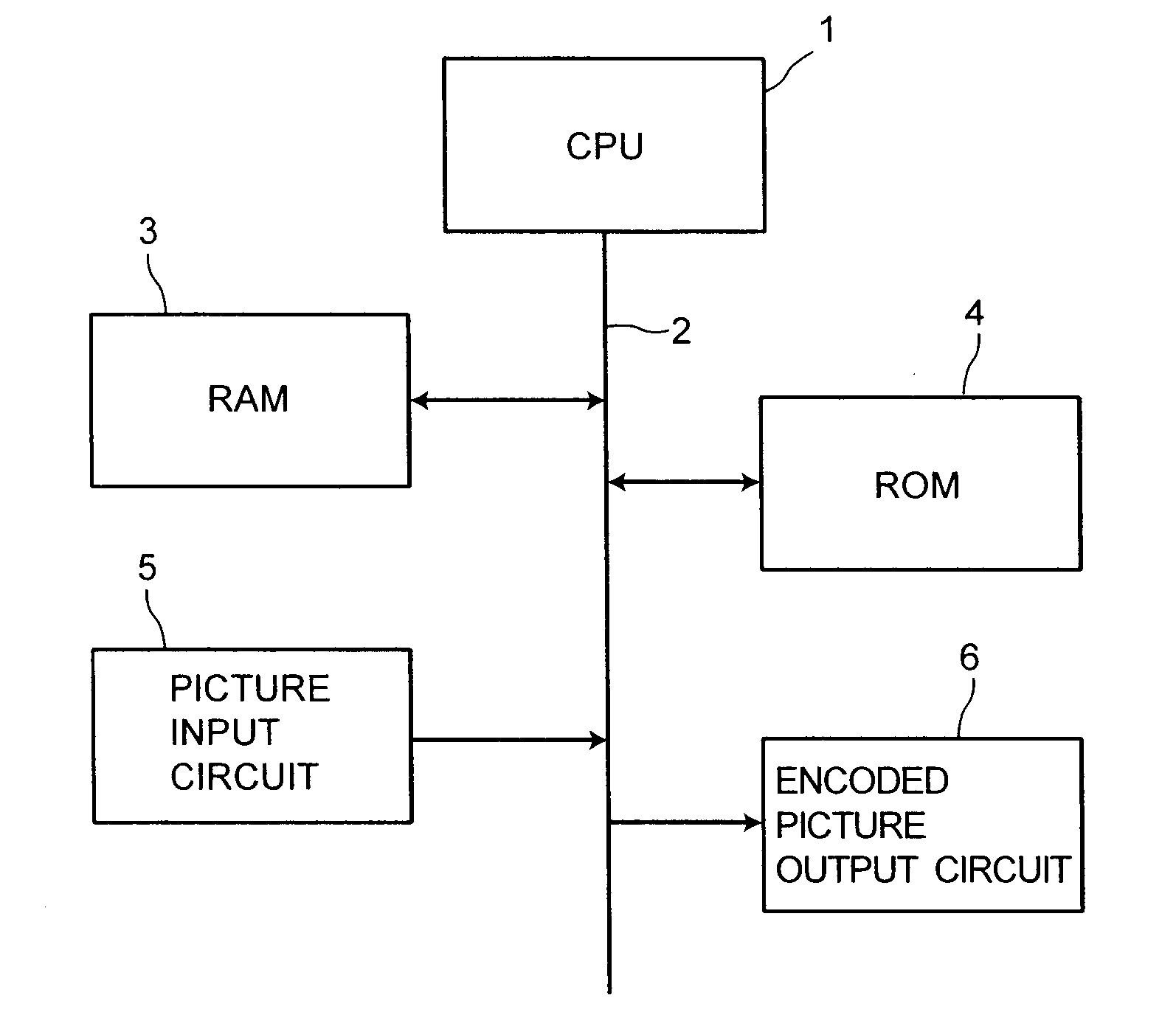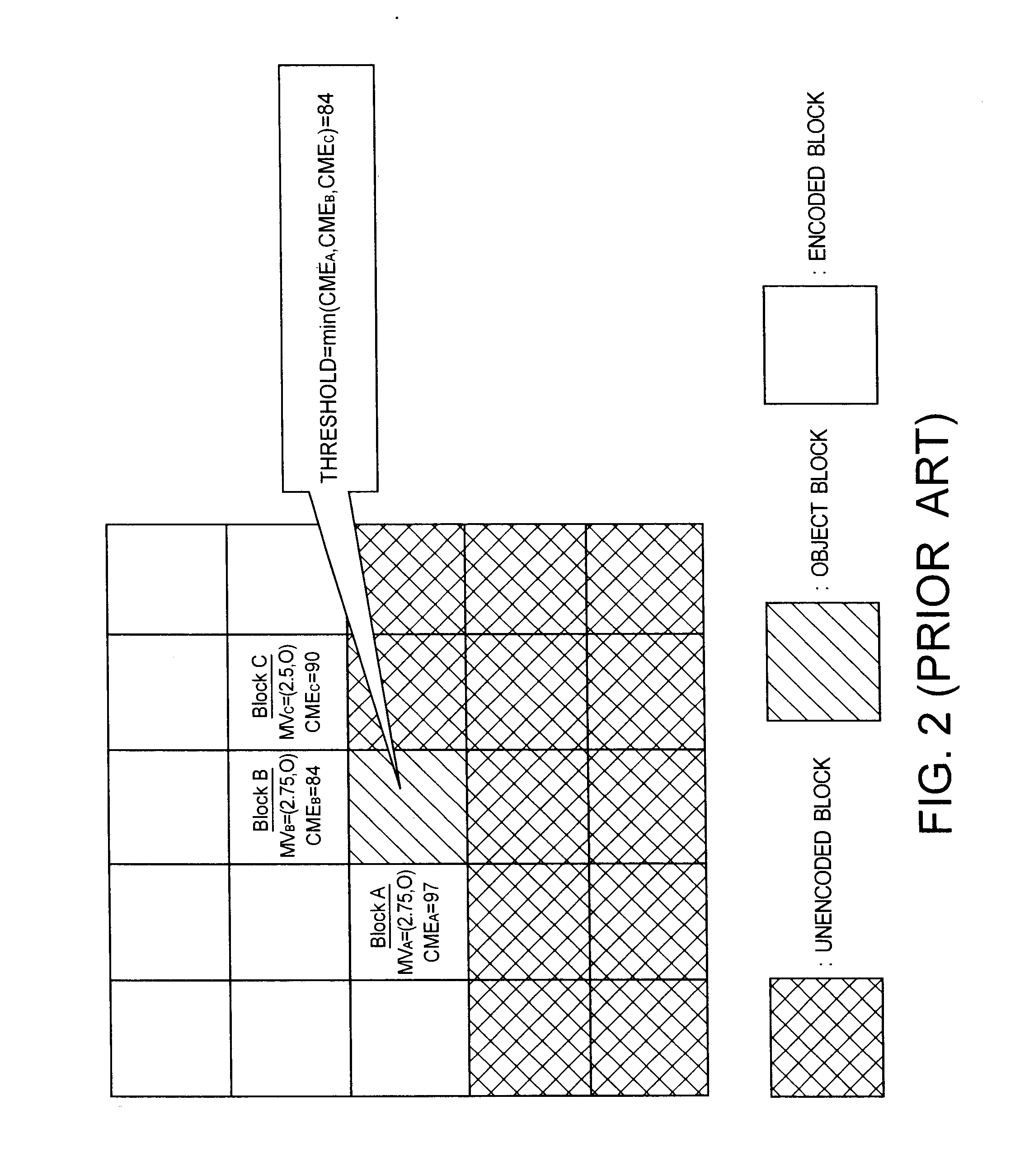Motion vector detection apparatus and method
a detection apparatus and motion vector technology, applied in the field of motion vector detection apparatus and method, can solve the problems of high computational complexity of motion vector detection processing necessary for motion compensation, inability to reliably detect motion vectors of small blocks, and inability to accurately detect motion vectors. the effect of low computational complexity and minimum residual cos
- Summary
- Abstract
- Description
- Claims
- Application Information
AI Technical Summary
Benefits of technology
Problems solved by technology
Method used
Image
Examples
Embodiment Construction
[0029]Hereinafter, various embodiments of the present invention will be explained by referring to the drawings. The present invention is not limited to the following embodiments.
[0030](1) Component of Motion Vector Detection Apparatus:
[0031]FIG. 4 is a block diagram of the motion vector detection apparatus according to one embodiment. The motion vector detection apparatus is a von Neumann computer having a picture input / output circuit. In FIG. 4, a bus 2 connects to a CPU 1, a RAM 3, a ROM 4, a picture input circuit 5, and an encoded output circuit 6. The ROM 4 stores a program to detect a motion vector. The CPU 1 reads the program from the ROM 4 in order, and executes motion vector detection.
[0032]A picture is input via the picture input circuit 5, and temporarily stored in the RAM 3. The CPU 1 detects a motion vector from the picture according to the program. After completing motion vector detection, the CPU 1 reads an encoding program from another region of the ROM 4, and encodes
PUM
 Login to view more
Login to view more Abstract
Description
Claims
Application Information
 Login to view more
Login to view more - R&D Engineer
- R&D Manager
- IP Professional
- Industry Leading Data Capabilities
- Powerful AI technology
- Patent DNA Extraction
Browse by: Latest US Patents, China's latest patents, Technical Efficacy Thesaurus, Application Domain, Technology Topic.
© 2024 PatSnap. All rights reserved.Legal|Privacy policy|Modern Slavery Act Transparency Statement|Sitemap



